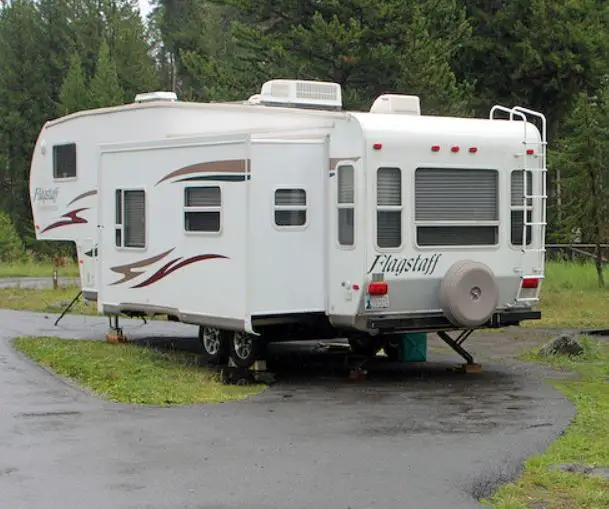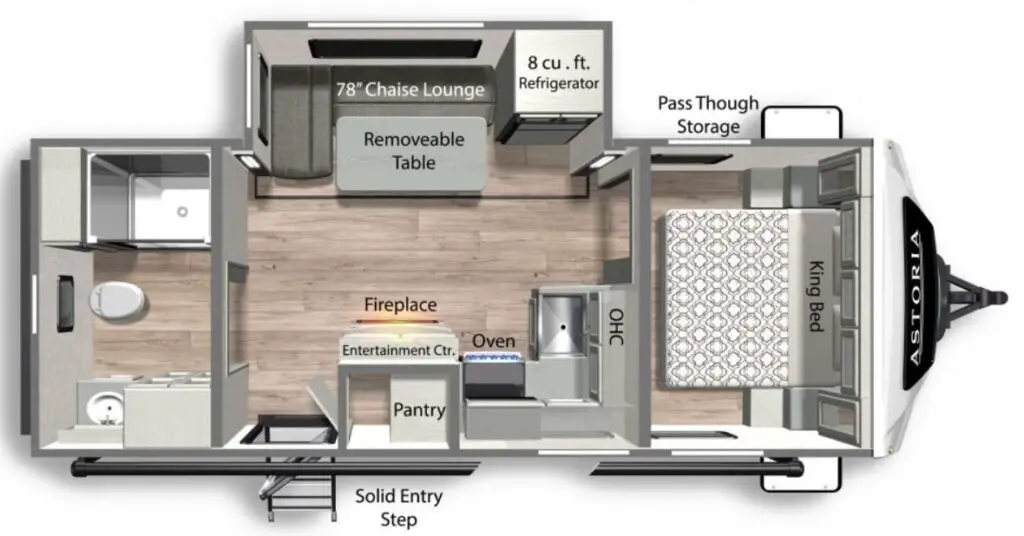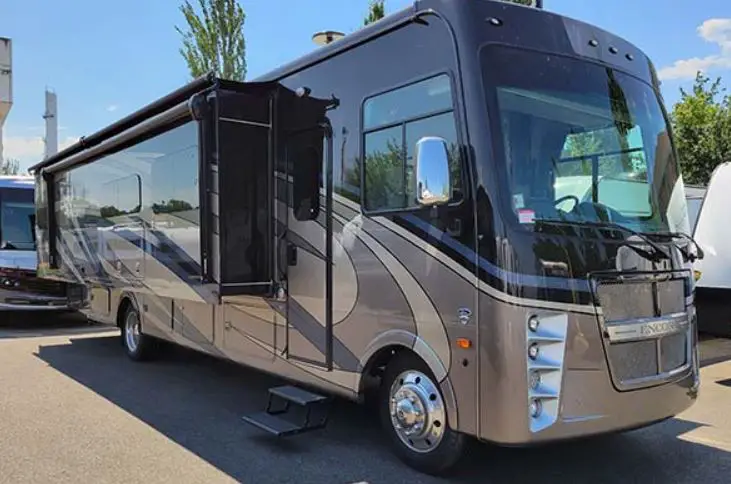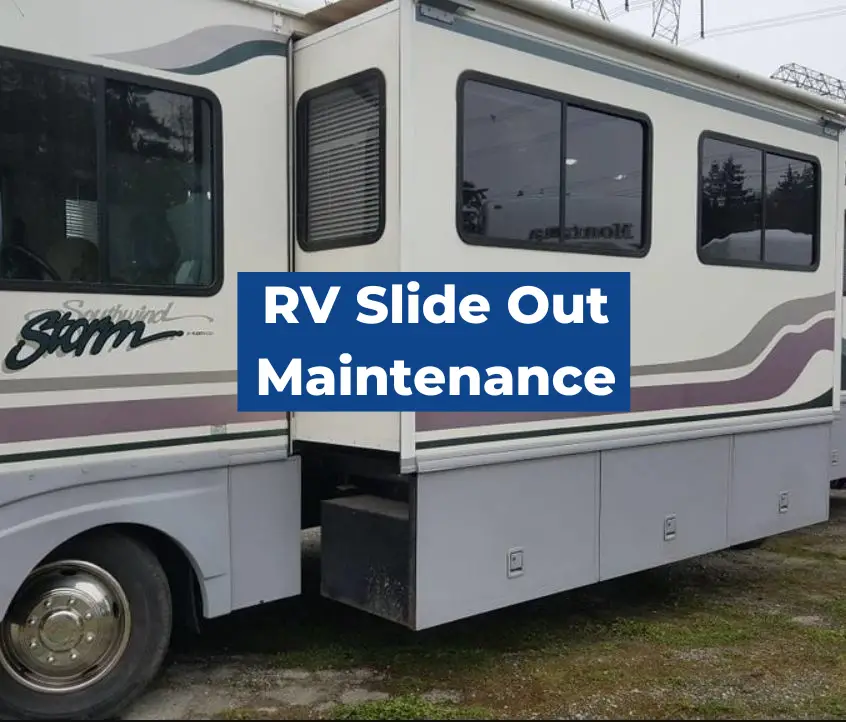RV slide out maintenance is an essential aspect of owning and maintaining an RV. RV slide-outs are a great way to add extra space to an RV, but they require proper upkeep to ensure they remain functional. RV slide-outs have moving parts, electrical components, and hydraulic systems that require regular cleaning, lubrication, and inspection to prevent wear and tear.
Regular maintenance of RV slide-outs can help prevent costly repairs and extend the life of the RV. Proper maintenance includes cleaning and lubricating the slide components at least twice a year, and possibly more frequently depending on the areas traveled. There are additional maintenance requirements for trouble-free RV slide-outs, such as inspecting the exterior of the slide-out room, checking for leaks, and ensuring the slide-out seals are in good condition.
Knowing how to maintain RV slide-outs can save RV owners time, money, and frustration. With proper attention, RV slide-outs can provide years of reliable service, making them a worthwhile investment for those who enjoy RV travel. In the following sections, we will explore the different aspects of RV slide-out maintenance, including cleaning, lubrication, inspection, and troubleshooting common problems.
Why RV Slide Out Maintenance is Important

Maintaining your RV slide out is essential to ensure that it functions properly and lasts for a long time. Neglecting slide out maintenance can lead to costly repairs and even accidents.
RV slide outs have many moving parts, including gears, rollers, and tracks. These parts can wear out over time, leading to malfunctions and even complete failure. Regular maintenance can help prevent these issues from occurring and keep your slide out functioning properly.
The hydraulic pump is another important component of your RV slide out. It is responsible for extending and retracting the slide out room. Checking the fluid level and ensuring that it is topped up is crucial to ensure that the hydraulic pump continues to function correctly.
Slideout rooms are prone to water leaks, which can cause significant damage to your RV. Rubber seals are used to prevent water from entering the slide out room, but they can deteriorate over time. Regular inspection and replacement of these seals can help prevent water leaks and the resulting damage.
Slideout mechanisms are also prone to wear and tear. Regular lubrication of these mechanisms can help prevent damage and ensure smooth operation.
Long story short: regular RV slide out maintenance is essential to ensure that your RV slide out functions properly and lasts for a long time.
Neglecting your RV slide out can lead to costly repairs and even accidents. Checking the hydraulic pump fluid level, inspecting and replacing rubber seals, and lubricating slideout mechanisms are all important steps in maintaining your RV slide out.
How to Maintain Your RV Slide Out

Maintaining your RV slide out is crucial to ensure it operates smoothly and lasts for years to come. Here are some essential steps to keep your RV slide out in top condition.
Checking Fluid Levels
One of the most important things to check is the fluid level in the hydraulic or electric motor that powers the slide out. This should be done regularly, especially before and after a long trip. If the fluid level is low, add more as needed to prevent damage to the motor.
Inspecting Rubber Seals
Rubber seals prevent water, air, and contaminants from entering the RV through the slide out. Inspect all seals carefully for any signs of wear, cracks, or damage. Replace any damaged seals to ensure proper protection.
Lubricating Moving Parts
Lubricating the moving parts of the RV slide out is essential to prevent wear and tear and ensure smooth operation. Use a dry lube or silicone spray to lubricate the slide rails and gears. Avoid using grease or oil-based lubricants as they can attract dirt and debris, causing damage over time.
To lubricate the rubber seals, use a product specifically designed for this purpose, such as Slipit. Apply the lubricant to the seals and wipe away any excess with a clean cloth.
Other Maintenance Tips
Here are some additional tips to keep your RV slide out in top condition:
- Sweep off any loose debris before extending the slide out to prevent damage.
- Use a roof cleaner product to remove any stubborn stuck-on stuff.
- Remove any tree sap and grease after trips to eliminate the need for a day-long scrubbing.
- Extend the slide out periodically to prevent the seals from drying out and cracking.
- Keep the slide room clean and dry to prevent mold and mildew growth.
By following these simple maintenance steps, you can keep your RV slide out in top condition and enjoy trouble-free operation for years to come.
Common Problems with RV Slide Outs

RV slide outs are a great feature that can significantly increase the living space in an RV. However, they can also be a source of frustration when they malfunction. In this section, we will discuss some of the most common problems with RV slide outs and how to troubleshoot them.
Rack and Pinion Issues
One of the most common problems with RV slide outs is rack and pinion issues. The rack and pinion system is responsible for moving the slide in and out. If there is a problem with this system, the slide may not move at all or may move unevenly.
To troubleshoot rack and pinion issues, start by inspecting the gears and teeth of the system. If they are worn or damaged, they may need to be replaced. Lubricating the system with a suitable lubricant can also help with smoother movement. If the issue persists, it may be necessary to take the RV to a dealer for further inspection and repair.
Slide Mechanism Problems
Another common problem with RV slide outs is slide mechanism problems. This can include issues with the rollers, tracks, and bearings that allow the slide to move in and out. If these components are worn or damaged, the slide may not move smoothly or may get stuck.
To troubleshoot slide mechanism problems, start by inspecting the rollers, tracks, and bearings. If they are worn or damaged, they may need to be replaced. Lubricating these components with a suitable lubricant can also help with smoother movement. If the issue persists, it may be necessary to take the RV to a dealer for further inspection and repair.
Hydraulic System Malfunctions
Hydraulic systems are another common component of RV slide outs. These systems are responsible for moving the slide in and out using hydraulic pressure. If there is a problem with the hydraulic system, the slide may not move at all or may move unevenly.
To troubleshoot hydraulic system malfunctions, start by inspecting the hydraulic fluid level and quality. If the fluid is low or dirty, it may need to be replaced. If the hydraulic pump is running but the slide does not move, there may be a leak in the system. Inspect the hoses and connections for any signs of leaks. If the issue persists, it may be necessary to take the RV to a dealer for further inspection and repair.
In conclusion, RV slide outs can be a great feature that significantly increases living space. However, like any mechanical system, they can malfunction. By understanding the common problems with RV slide outs and how to troubleshoot them, RV owners can keep their slide outs in good working condition.
How to Troubleshoot RV Slide Out Problems
RV slide outs are a great way to increase living space in an RV. However, they can also be a source of frustration when they don’t work properly. Here are some steps to take when troubleshooting RV slide out problems.
Steps to Take When the Slide Out Won’t Move
If the slide out won’t move, here are some things to check:
- Check the power source: Make sure the RV is plugged in or the battery is charged.
- Check the fuses and circuit breakers: Make sure they are not blown or tripped.
- Check the switch: Make sure the switch is working properly.
- Check the wiring: Make sure the wiring is not damaged or loose.
- Check the motor: If everything else checks out, the motor may be the problem.
What to Do When the Slide Out is Stuck
If the slide out is stuck, here are some things to check:
- Check for obstructions: Make sure there is nothing blocking the slide out.
- Check the hydraulic fluid: If the slide out is hydraulic, check the fluid level and make sure there are no leaks.
- Check the alignment: If the slide out is misaligned, it may be stuck. Check the alignment and adjust if necessary.
- Retract the room: If everything else fails, retract the room manually using the crank handle or the override system.
See related: How to fix a sagging RV slide out & Keystone Cougar slide out problems
In summary, troubleshooting RV slide out problems can be a simple process if you know what to look for. By following these steps, you can identify and fix most problems with your RV slide out.
Conclusion
Maintaining RV slide outs is an essential part of keeping an RV in good condition. Regular cleaning and inspection can prevent damage and increase the lifespan of the RV’s slide outs.
One important aspect of maintaining slide outs is keeping them clean. This involves using a soft brush and mild soap to remove dirt and debris that can cause damage to the RV’s exterior finish. It is also crucial to avoid using abrasive cleaners like bleach or ammonia, as these can cause further damage to the RV.
Another critical factor in maintaining slide outs is regular inspection. This includes checking for rust, corrosion, and any signs of wear and tear. Inspecting and cleaning the roof of the slide out is also important, as debris on the roof can cause damage to the slide out’s seal, leading to leaks and other issues.
In addition to cleaning and inspection, it is also essential to keep pets and people away from any moving slide outs, inside and out. Ensuring that nothing is blocking or preventing the slide out’s extension is also crucial.
Overall, proper maintenance of RV slide outs can save RV owners money in the long run by preventing costly repairs and prolonging the lifespan of the RV. By following the tips and guidelines outlined in this article, RV owners can ensure that their slide outs remain in good condition and continue to function properly for years to come.
Check out our other helpful RV DIY guides while you’re here:

